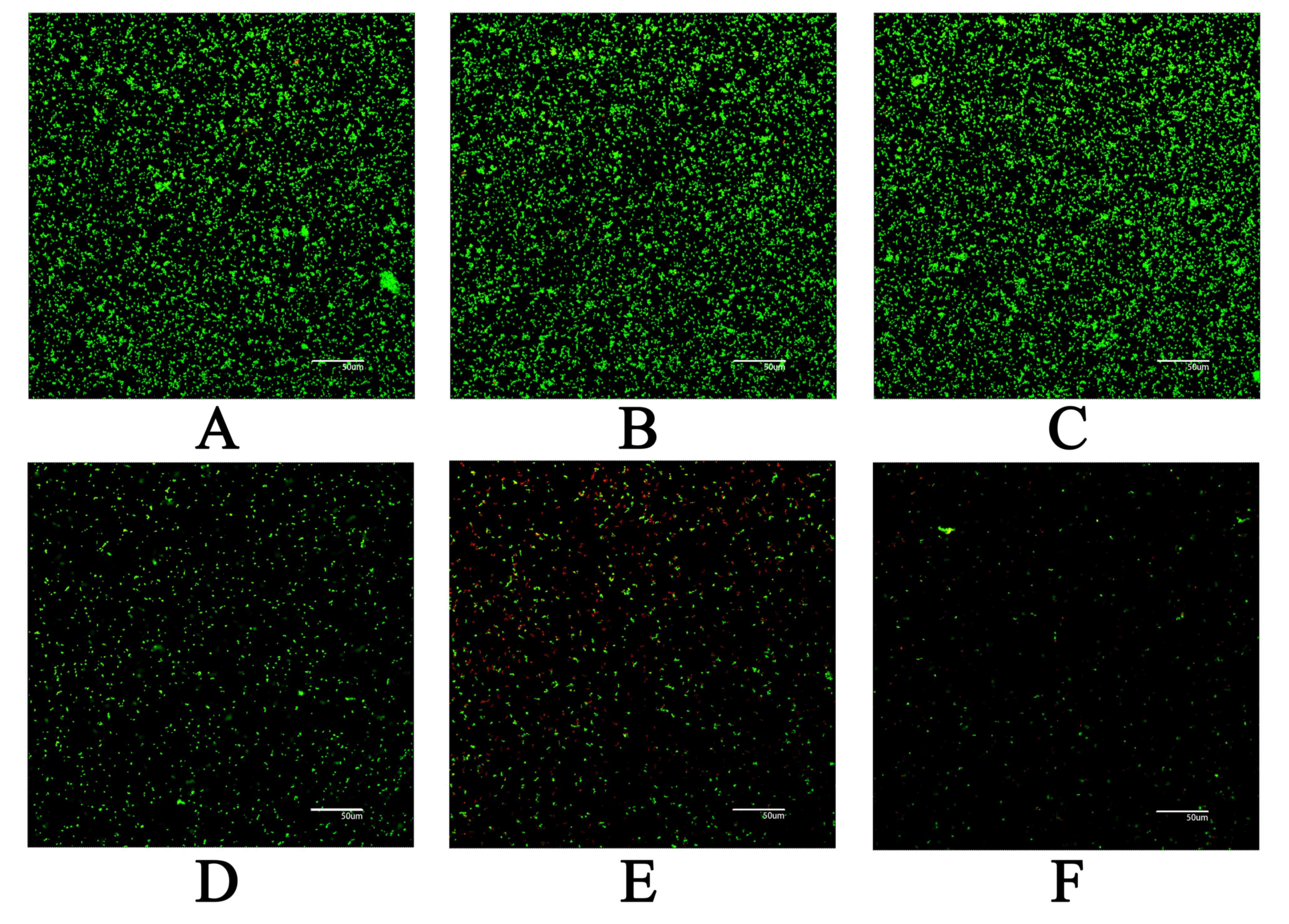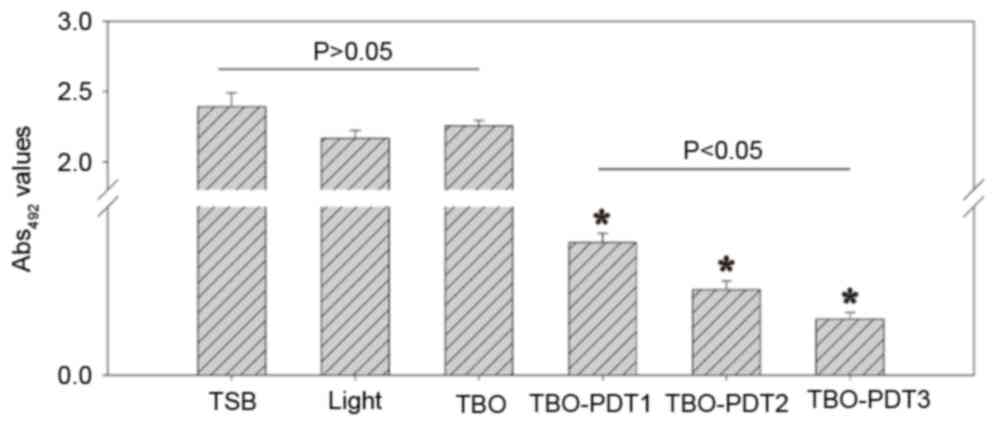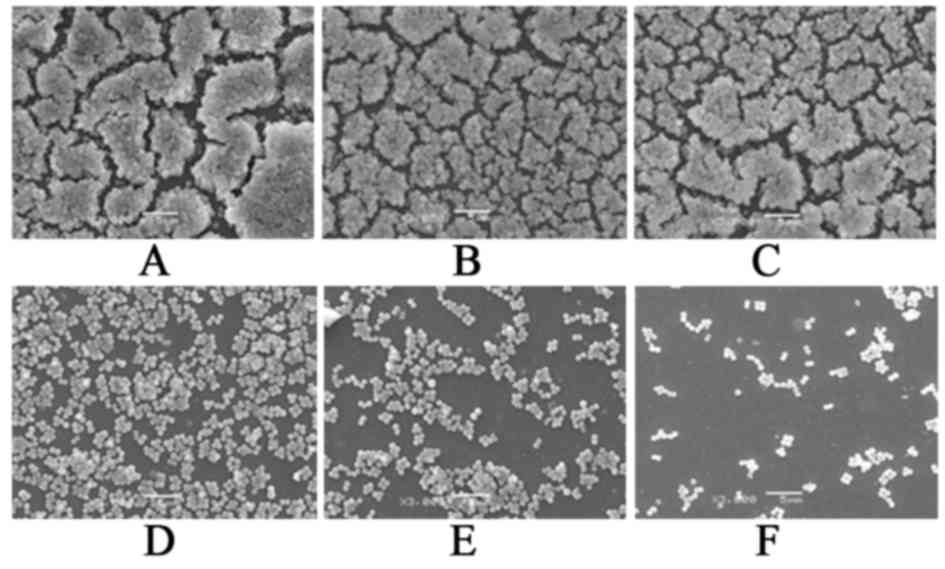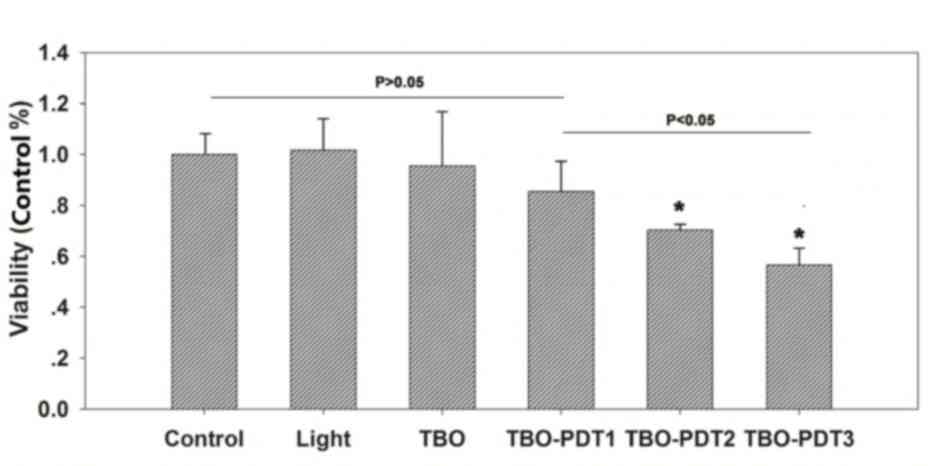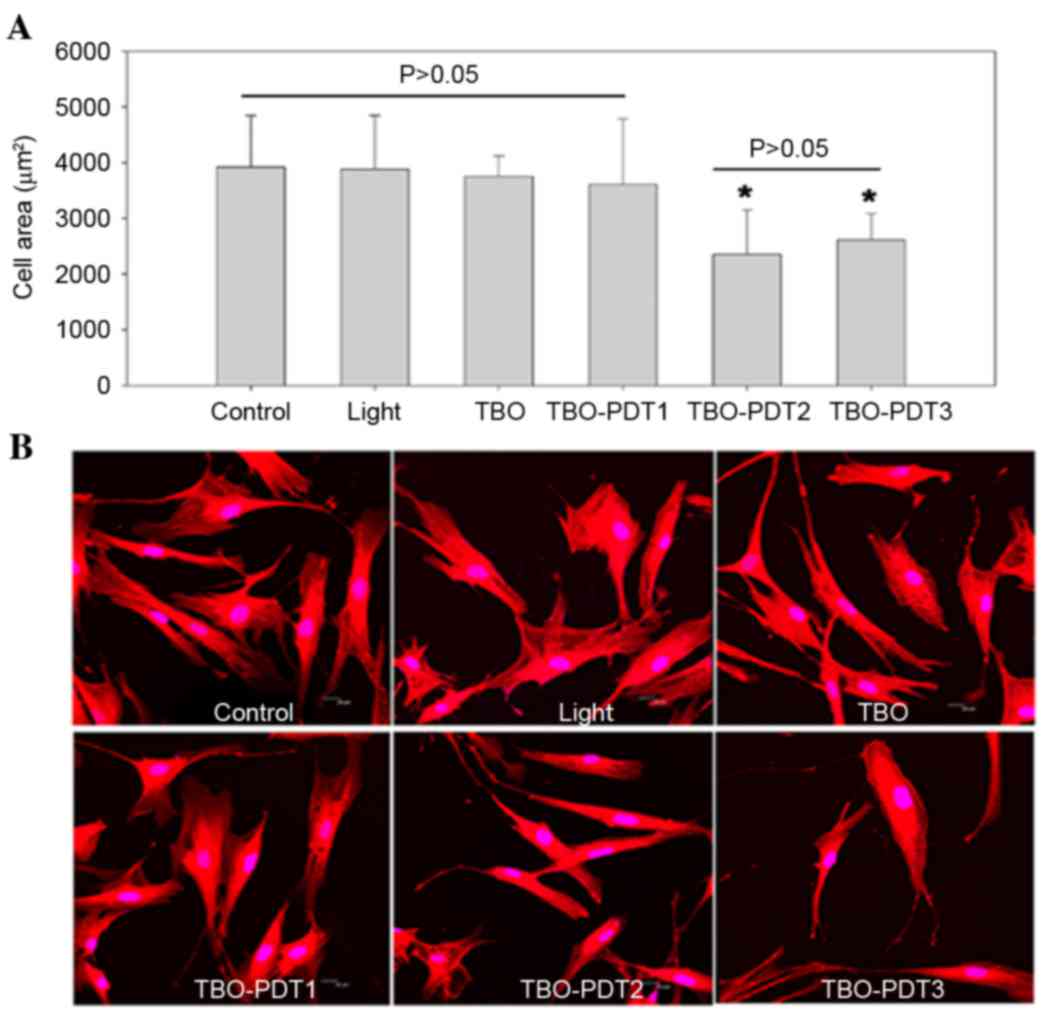|
1
|
Gustilo RB and Anderson JT: Prevention of
infection in the treatment of one thousand and twenty-five open
fractures of long bones: Retrospective and prospective analyses. J
Bone Joint Surg Am. 58:453–458. 1976. View Article : Google Scholar : PubMed/NCBI
|
|
2
|
Tan HL, Peng ZX, Li QT, Xu XF, Guo SR and
Tang TT: The use of quaternised chitosan-loaded PMMA to inhibit
biofilm formation and downregulate the virulence-associated gene
expression of antibiotic-resistant staphylococcus. Biomaterials.
33:365–377. 2012. View Article : Google Scholar : PubMed/NCBI
|
|
3
|
Chokr A, Watier D, Eleaume H, Pangon B,
Ghnassia JC, Mack D and Jabbouri S: Correlation between biofilm
formation and production of polysaccharide intercellular adhesin in
clinical isolates of coagulase-negative staphylococci. Int J Med
Microbiol. 296:381–388. 2006. View Article : Google Scholar : PubMed/NCBI
|
|
4
|
Stewart PS and Costerton JW: Antibiotic
resistance of bacteria in biofilms. Lancet. 358:135–138. 2001.
View Article : Google Scholar : PubMed/NCBI
|
|
5
|
Begun J, Gaiani JM, Rohde H, Mack D,
Calderwood SB, Ausubel FM and Sifri CD: Staphylococcal biofilm
exopolysaccharide protects against Caenorhabditis elegans immune
defenses. PLoS Pathog. 3:e572007. View Article : Google Scholar : PubMed/NCBI
|
|
6
|
Kristian SA, Birkenstock TA, Sauder U,
Mack D, Götz F and Landmann R: Biofilm formation induces C3a
release and protects Staphylococcus epidermidis from IgG and
complement deposition and from neutrophil-dependent killing. J
Infect Dis. 197:1028–1035. 2008. View
Article : Google Scholar : PubMed/NCBI
|
|
7
|
Montanaro L, Campoccia D and Arciola CR:
Advancements in molecular epidemiology of implant infections and
future perspectives. Biomaterials. 28:5155–5168. 2007. View Article : Google Scholar : PubMed/NCBI
|
|
8
|
Gauglitz GG, Korting HC, Pavicic T,
Ruzicka T and Jeschke MG: Hypertrophic scarring and keloids:
Pathomechanisms and current and emerging treatment strategies. Mol
Med. 17:113–125. 2011. View Article : Google Scholar : PubMed/NCBI
|
|
9
|
Vrijman C, van Drooge AM, Limpens J, Bos
JD, van der Veen JP, Spuls PI and Wolkerstorfer A: Laser and
intense pulsed light therapy for the treatment of hypertrophic
scars: A systematic review. Br J Dermatol. 165:934–942. 2011.
View Article : Google Scholar : PubMed/NCBI
|
|
10
|
Jori G: Photodynamic therapy of microbial
infections: State of the art and perspectives. J Environ Pathol
Toxicol Oncol. 25:505–519. 2006. View Article : Google Scholar : PubMed/NCBI
|
|
11
|
Tang HM, Hamblin MR and Yow CM: A
comparative in vitro photoinactivation study of clinical isolates
of multidrug-resistant pathogens. J Infect Chemother. 13:87–91.
2007. View Article : Google Scholar : PubMed/NCBI
|
|
12
|
Wainwright M: Photoantimicrobials-so
what's stopping us? Photodiag Photodyn Ther. 6:167–169. 2009.
View Article : Google Scholar
|
|
13
|
Zanin IC, Gonçalves RB, Junior AB, Hope CK
and Pratten J: Susceptibility of Streptococcus mutans biofilms to
photodynamic therapy: An in vitro study. J Antimicrob Chemother.
56:324–330. 2005. View Article : Google Scholar : PubMed/NCBI
|
|
14
|
Zanin IC, Lobo MM, Rodrigues LK, Pimenta
LA, Höfling JF and Goncalves LB: Photosensitization of in vitro
biofilms by toluidine blue O combined with light-emitting diode.
Eur J Oral Sci. 114:64–69. 2006. View Article : Google Scholar : PubMed/NCBI
|
|
15
|
Sharma M, Visai L, Bragheri F, Cristiani
I, Gupta PK and Speziale P: Toluidine blue-mediated photodynamic
effects on staphylococcal biofilms. Antimicrob Agents Chemother.
52:299–305. 2008. View Article : Google Scholar : PubMed/NCBI
|
|
16
|
Cai H, Gu Y, Sun Q, Zeng J, Dong N and
Zhao G: Effect of hematoporphyrin monomethyl ether-mediated
photodynamic therapy on hypertrophic scar fibroblasts.
Photodermatol Photoimmunol Photomed. 27:90–96. 2011. View Article : Google Scholar : PubMed/NCBI
|
|
17
|
Chiu LL, Sun CH, Yeh AT, Torkian B,
Karamzadeh A, Tromberg B and Wong BJ: Photodynamic therapy on
keloid fibroblasts in tissue-engineered keratinocyte-fibroblast
co-culture. Lasers Surg Med. 37:231–234. 2005. View Article : Google Scholar : PubMed/NCBI
|
|
18
|
Campbell SM, Tyrrell J, Marshall R and
Curnow A: Effect of MAL-photodynamic therapy on hypertrophic
scarring. Photodiagnosis Photodyn Ther. 7:183–188. 2010. View Article : Google Scholar : PubMed/NCBI
|
|
19
|
Kashef N, Ravaei Sharif Abadi G and Djavid
GE: Photodynamic inactivation of primary human fibroblasts by
methylene blue and toluidine blue O. Photodiagnosis Photodyn Ther.
9:355–358. 2012. View Article : Google Scholar : PubMed/NCBI
|
|
20
|
Sahu K, Bansal H, Mukherjee C, Sharma M
and Gupta PK: Atomic force microscopic study on morphological
alterations induced by photodynamic action of Toluidine Blue O in
Staphylococcus aureus and Escherichia coli. J Photochem and
Photobiol B. 96:9–16. 2009. View Article : Google Scholar
|
|
21
|
Christensen GD, Simpson WA, Younger JJ,
Baddour LM, Barrett FF, Melton DM and Beachey EH: Adherence of
coagulase-negative staphylococci to plastic tissue culture plates:
A quantitative model for the adherence of staphylococci to medical
devices. J Clin Microbiol. 22:996–1006. 1985.PubMed/NCBI
|
|
22
|
Dosselli R, Millioni R, Puricelli L,
Tessari P, Arrigoni G, Franchin C, Segalla A, Teardo E and Reddi
ED: Molecular targets of antimicrobial photodynamic therapy
identified by a proteomic approach. J Proteomics. 77:329–343. 2012.
View Article : Google Scholar : PubMed/NCBI
|
|
23
|
Gupta S and Sharma VK: Standard guidelines
of care: Keloids and hypertrophic scars. Indian J Dermatol Venereol
Leprol. 77:94–100. 2011. View Article : Google Scholar : PubMed/NCBI
|
|
24
|
Berman B, Perez OA, Konda S, Kohut BE,
Viera MH, Delgado S, Zell D and Li Q: A review of the biologic
effects, clinical efficacy, and safety of silicone elastomer
sheeting for hypertrophic and keloid scar treatment and management.
Dermatol Surg. 33:1291–1303. 2007. View Article : Google Scholar : PubMed/NCBI
|



